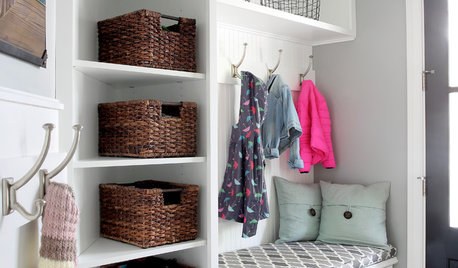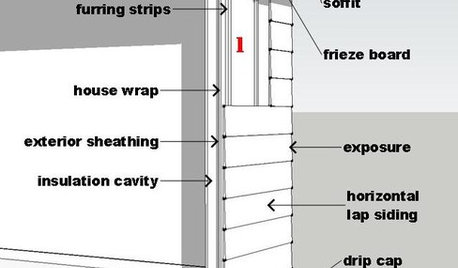Gutter Drainage Systems
youth4him
19 years ago
Related Stories

HOUSEKEEPINGIt’s Time to Clean Your Gutters — Here’s How
Follow these steps to care for your gutters so they can continue to protect your house
Full Story
BATHROOM DESIGNConvert Your Tub Space Into a Shower — Waterproofing and Drainage
Step 4 in swapping your tub for a sleek new shower: Pick your waterproofing materials and drain, and don't forget to test
Full Story
DECORATING GUIDESYou Said It: 'If You Do Nothing Else ... Clean Your Gutters,' and More
Design advice, observations and inspiration that struck a chord this week
Full Story
FUN HOUZZGeek Lab: How to Build a Steampunk Cat Transit System
Give your kitty another avenue for fun with a tubular walkway system that lets him go his own way
Full Story
MOST POPULAROrganized From the Start: 8 Smart Systems for Your New House
Establishing order at the outset will help prevent clutter from getting its foot in the door
Full Story
THE ART OF ARCHITECTUREArchitect's Toolbox: Rain Screens Up House Health
To thwart unwanted moisture and poor air quality in your home, think rain screens and drainage planes
Full Story
LANDSCAPE DESIGNLandscaping Tricks to Manage Stormwater Runoff
Help rainwater absorb slowly back into the earth with paving grids, gravel beds and other porous systems
Full Story
ARCHITECTURE15 Smart Design Choices for Cold Climates
Keep your home safe and comfortable in winter by choosing the right home features and systems
Full Story
HOUSEPLANTSHow to Add a Living Wall
Learn how to choose systems and plants, and what it will cost to bring a bit of the outdoors in or green up a garden wall
Full Story
MONTHLY HOME CHECKLISTSOctober Checklist for a Smooth-Running Home
You're due for some winterizing, like clearing rain gutters and stowing swimsuits — but leave time for a fun project
Full Story







youth4himOriginal Author
trencher
Related Professionals
West Milford Landscape Architects & Landscape Designers · Chattanooga Landscape Architects & Landscape Designers · Stoughton Landscape Contractors · Cockeysville Landscape Contractors · Galveston Landscape Contractors · Haverhill Landscape Contractors · Hendersonville Landscape Contractors · La Vista Landscape Contractors · North Ridgeville Landscape Contractors · Pahrump Landscape Contractors · Pleasant Prairie Landscape Contractors · San Pedro Landscape Contractors · Oxon Hill Landscape Contractors · Hemet Solar Energy Systems · Ramsey Solar Energy Systemsyouth4himOriginal Author
billc1
youth4himOriginal Author
plumbguy
youth4himOriginal Author
plumbguy
youth4himOriginal Author
plumbguy
youth4himOriginal Author
plumbguy
halldj
youth4himOriginal Author
trencher
bullfrog1870_yahoo_com
youth4himOriginal Author
youth4himOriginal Author